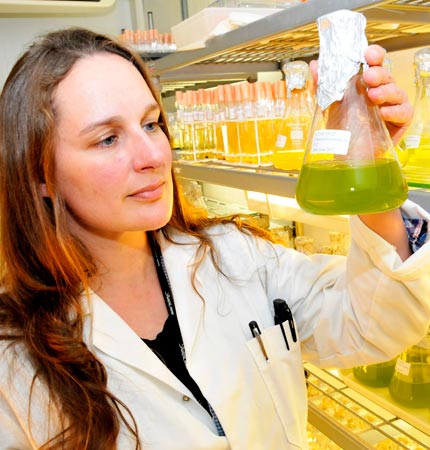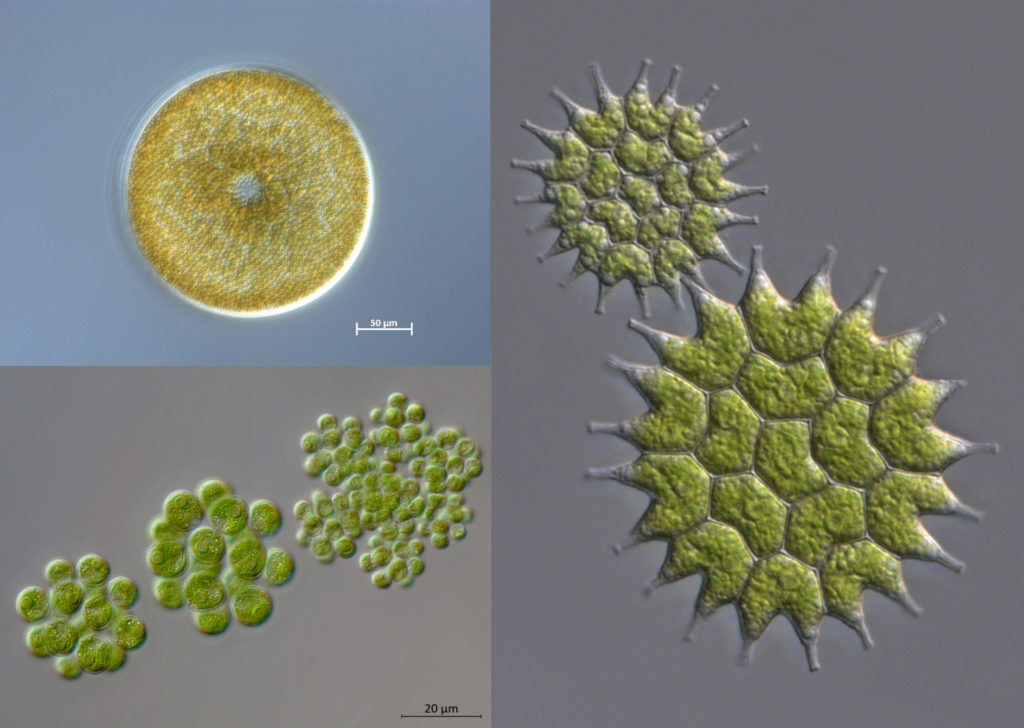
A Living Treasure of Protist Diversity
Most of the algae and protozoa cultures that the Culture Collection of Algae and Protozoa (CCAP) are preparing and sending to the Sanger Institute for the Darwin Tree of Life project were collected many years ago and have been kept in continuous culture ever since. While CCAP staff love to collect and isolate new strains when we can, maintaining the 3000-plus strains kept in the public collection takes up most of our time!

CCAP is a Biological Resource Centre located within the Scottish Association for Marine Science (SAMS) near Oban on the scenic west coast of Scotland, with foundations stretching back to the cultures isolated by Professor Ernst Georg Pringsheim and added to his small collection in Prague in the 1920s (our oldest strain is a Chlorella vulgaris isolated in 1892!). Supported by the Natural Environment Research Council (NERC), part of UKRI, CCAP holds a growing collection of microalgae, cyanobacteria, protozoa, small seaweeds and algal pathogens, which are supplied to scientists, educators and businesses worldwide.

Microalgae and protozoa make up the vast bulk of eukaryote diversity, with lineages across most of the eukaryotic tree of life, yet we still know very little about them. Algae and cyanobacteria produce a range of molecules that can be important for biotechnology, aquaculture, biofuels and pharma- or nutraceutical industries, which include fatty acids, pigments, proteins, antioxidants and polysaccharides. Equally, microalgae are the main primary producers in aquatic environments and play a huge role in the environment helping with the conservation of biodiversity and sustainability of the aquatic environment.

CCAP holds strains collected from all continents, but the largest proportion (25%) were collected from the UK or in UK coastal waters. This comprises 259 genera and 364 individual species and varieties, including green algae, desmids, diatoms, dinoflagellates, cyanobacteria, euglenophytes, amoebae, ciliates, flagellates, small red and brown seaweeds and a couple of oomycete pathogens of brown seaweeds! Samples were collected from ditches and puddles, rock pools and salt marsh, a mole hill and a cow’s stomach.

We have sent 31 strains to Sanger as of June 2021, with another 9 almost ready to go. Each strain must be grown up in volume before it can be harvested (most of our cultures are kept in test tubes to save on space and resources), which could take anything from a few weeks to a few months depending on the species. Even within the same taxonomic group, different species can have different growth rates and environmental preferences.

Our beautiful bright green marine microalga Dunaliella primolecta (CCAP 11/34) is being used as a research and development strain for the Tree of Life project. It grows very rapidly and reaches a high density within a very short space of time. Here you can see our 1L continuous culture with clean air bubbling through it. The air system allows for much better gas exchange, which increases growth rates. We grow this strain in a specially adapted growth media called F/2Quad; meaning we are providing the algae with four times the amount of Nitrate and Phosphate compared to the standard F/2 recipe. This results in a very happy culture for much longer periods of time, as they thrive on the extra nutrients. In the video you can see the individual cells of Dunaliella primolecta buzzing about; they are roughly 10-15μm in length and rarely stay still for very long. This strain was originally isolated from the coastal waters off Plymouth in Devon in 1936 and has been in the culture collection ever since.
Another of our extraordinary organisms that has been sent for analysis is CCAP 979/9 Rhodomonas baltica, a beautiful reddish pink marine cryptophyte which was isolated back in 1961 from a rock pool in Bordeaux Harbour on the Isle of Guernsey. Some cryptophyte (cryptomonad) species are known to produce blooms in ideal conditions but are not known to be toxic. Their chloroplasts contain chlorophylls a and c and phycobiliproteins, which in different concentrations and combinations can cause a variety of colours from the red you can see in this species to browns, greens and sometimes even blue!

